The Caucasus region is an amazingly diverse area, sandwiched between the Black Sea and the Caspian Sea. It is truly transcontinental, with an enormous amount of culture packed into a relatively small area of land. The ‘heart’ of the Caucasus consists of Armenia, Azerbaijan and Georgia. To the north is Russia, with Turkey in the west and Iran in the south, just adding to the areas impressive cultural diversity. The region is famous for mountains, climbers can find almost anything in the Caucasus, from peaks over 5000m to stunning canyons and abundant cliffs. We spent 10 weeks in the Caucasus and we genuinely loved it, it is one of our all time highlights – for the people, the culture and the climbing.

In this article we will discuss hints and tips for travelling in the region to help you get the most out of your trip. Below is a map of the all the different crags we visited during our trip to the Caucasus region, as well as our favourite rest day activities. If you would like to read more about specific areas, please visit our individual posts about Armenia, Azerbaijan and Georgia.
What to expect from the climbing in the Caucasus
Climbing style
Despite the fact the three countries combined are smaller than Germany, the difference in rock types, climbing style and environment is radical. Because of this, it’s hard to make any specific recommendations – just bring your entire bag of tricks, your best mental game and leave your ego at home! We found the grading in general to be tough, particularly in Georgia, where we received an absolute kicking.

The most common rock type is limestone, but there is also lots of volanic tuff, basalt and other igneous rock types. There are loads of crimps, cracks, pockets, jugs and laybacks – even some super steep stuff. Route lengths can vary from very short 10 meter bouldery climbs to several hundred meters, our personal favourite style is the longer single pitch routes with sustained climbing – also plentiful in the Caucasus. The cliché ‘there’s something for everyone’ rings true here, but you might have to work a bit harder to find it than in more popular climbing areas.



Clockwise from left: Katskhi – Georgia, Nardaran – Azerbaijan and Lake Sevan – Armenia
Climbing gear recommendations
Here is a list of gear we would recommend to take for a trip to the Caucasus region:
- An 80m rope is great for anyone wanting to climb single pitch routes and the occasional multipitch, giving you a good abseil length. 2 x 60m ropes would be best for those wanting to do a lot of multipitching.
- 15-20 quickdraws should cover all bases
- Clipstick – very handy to have, there are some routes where falling before the first bolt could be serious.
- A trad rack is only necessary for people seeking lots of multipitches, the majority of single pitch routes are bolted. Armenia is the exception and has by far the most trad routes of the 3.
- Any chalk, skincare etc you need, it is quite difficult to find in the region if you run out.

Bolts
Bolts in the Caucasus are best taken on a case by case basis. Some are excellent new bolts courtesy of local climbers, others may be homemade and rusty, or even dating back to Soviet era climbing competitions. A visual inspection should give you a good idea of what you’re dealing with, but it is worth remaining vigilant as we once arrived at the top of a route, only to discover there was no anchor!
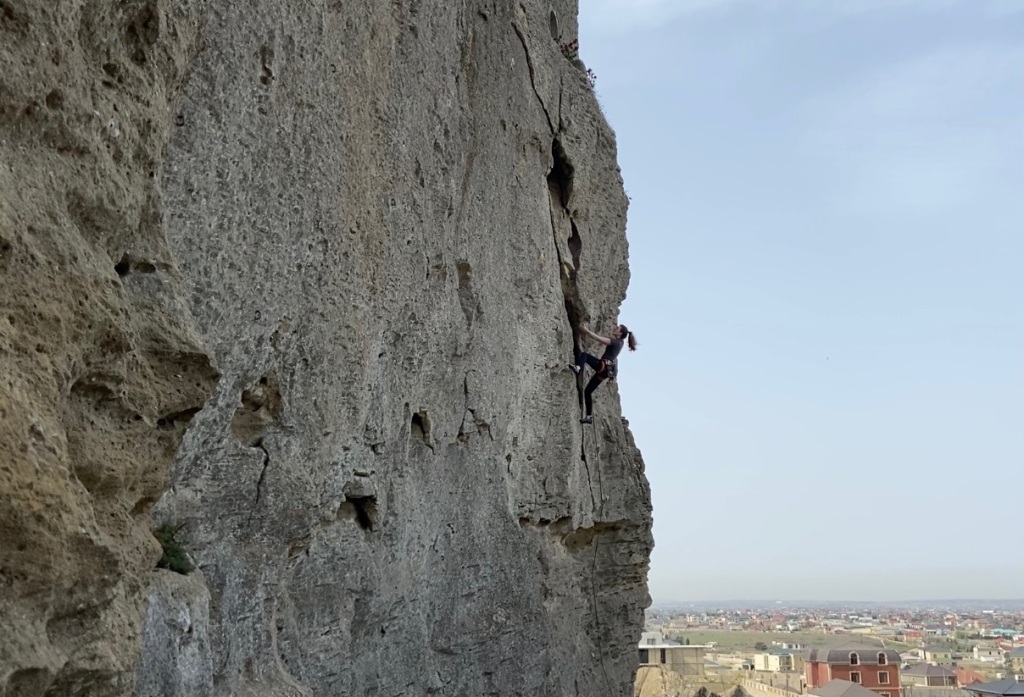
Climbing guidebooks and information
There aren’t any guidebooks for climbing in the Caucasus, any topos or information you need will be available online and should be accessible free of charge. We have the specifics linked on our posts for each individual country, new topos have been uploaded since our visit so it is worth checking regularly for updates. To give a general overview, use UpTheRocks for Armenia, AllClimb for Azerbaijan and ClimbingGeorgia and Climbing.GE for Georgia. As always, a general check on theCrag and Mountain Project is worthwhile and with all of those you should find everything you need. Visiting crags with no topos, finding the tricky approach and getting lost is all part of the fun and the experience, with a bit of perseverance you always find it in the end!



Clockwise from left: Katskhi – Georgia, Beshbarmaq – Azerbaijan and Hells Canyon – Armenia
Weather and Climbing season in the Caucasus region
It is difficult to pin an exact period when the climbing season starts and ends in the Caucasus as the temperatures can fluctuate massively depending on the altitude and location of each crag.
In general, spring and autumn will give you the best conditions for rock climbing – the temperatures are mild and it is relatively dry. Avoid visiting in the summer unless you are going to be in higher altitude areas as it will be very hot. Autumn will see most roads completely snow free, something that plagued us in spring. Mid-March to mid-May and mid-September to mid-November will be the general times to aim for. It will be possible to climb at other times, especially if you are more heat or cold resistant than the average climber.

Top Tip: The most important thing to consider when deciding when to visit is the altitude of the crags you want to climb at.
Transport
Cars
Having a car in the Caucasus is a huge asset and if you haven’t driven there in your own car, then it is absolutely worth renting one. Many of the climbing areas are very remote or difficult to access with public transport, the same applies for most of our favourite rest day activities. Additionally, there are some truly stunning and exciting roads that are a pleasure to drive yourself, rather than be a passenger. If you’re desperate to avoid cars, a bike will be your next best option.
There are many companies offering car rentals, ranging from big, well-known brands to private business. It’s best to go with the ones that have the best reviews, we used all manner of different businesses and never had any issues.
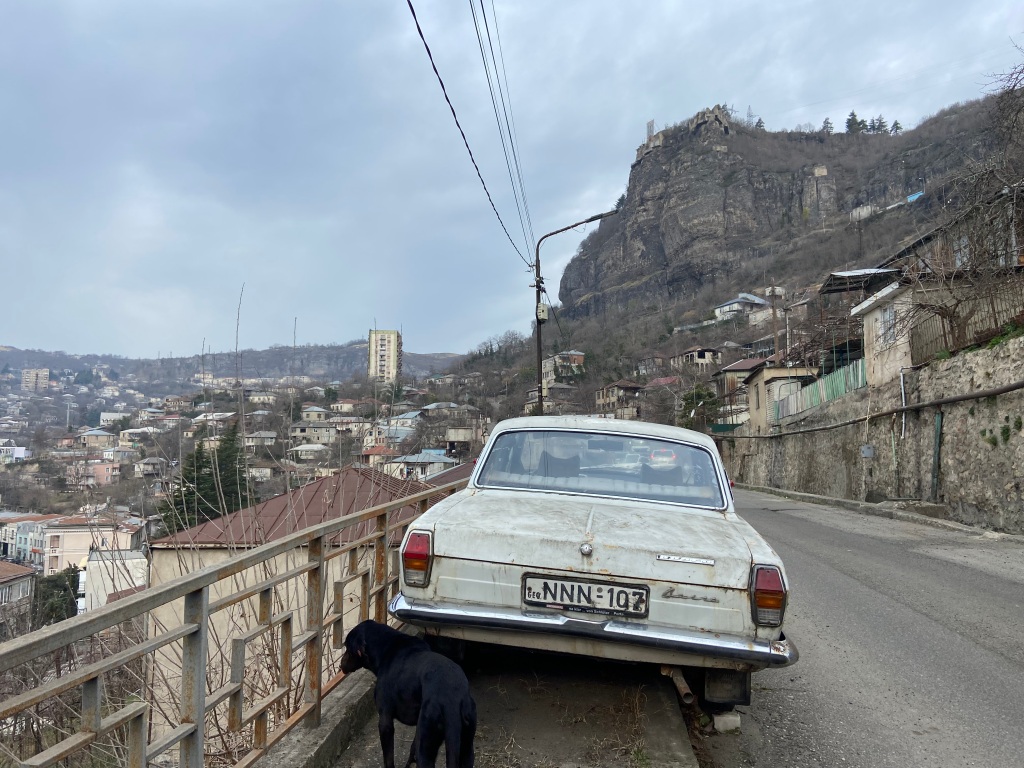
It is also a requirement to have an international drivers permit (IDP). All three countries use the 1968 IDP which can be purchased from your home country before travel for approximately €6.50.
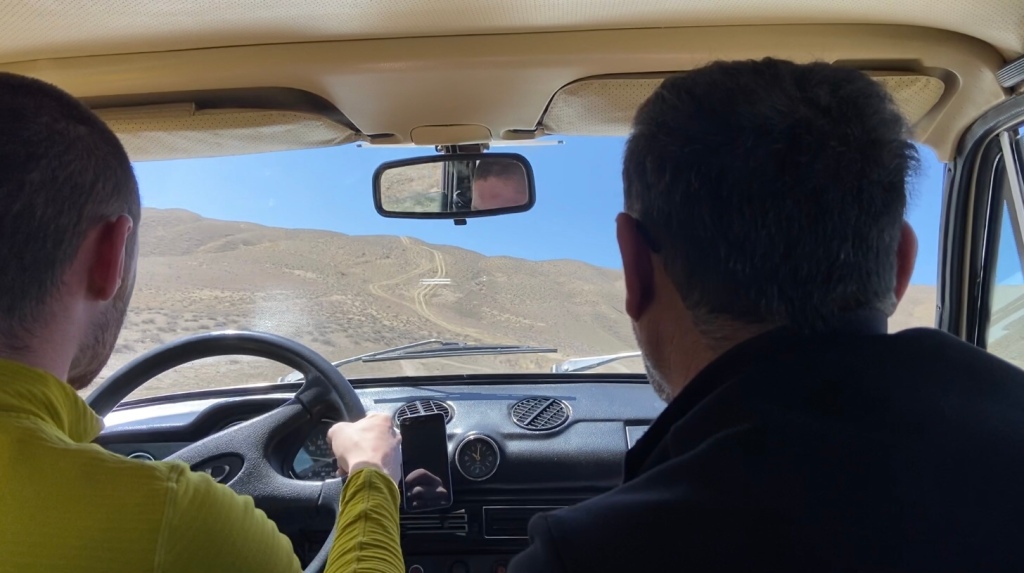
Driving safety
Depending on the location, the season and your own driving experience, some of the roads and driving in the region may feel a bit spicier than you are used to. Don’t let this put you off from driving, as exploring quiet, rural corners of the Caucasus at your own will is one of the great pleasures of travelling here. However, we would recommend going for a bottom of the range car, it will be cheaper to rent and less expensive if it gets damaged. We have also found rental companies don’t seem to care much about the older and beaten up cars, which takes some pressure off your trip.
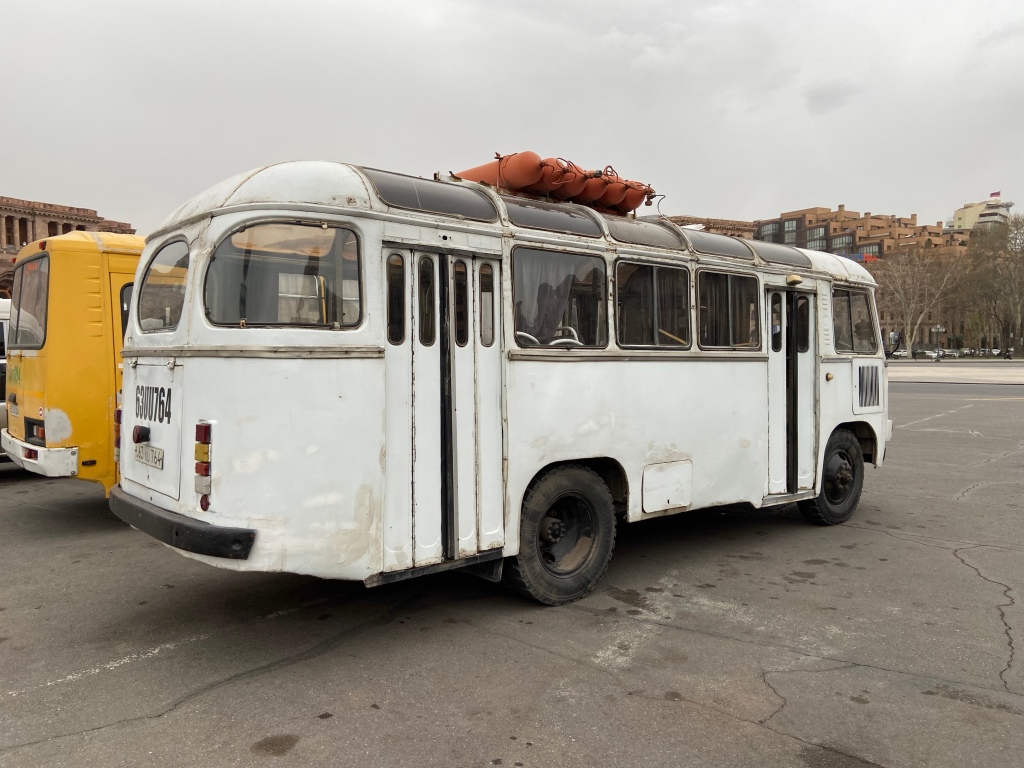
Trains
The overnight train is an affordable and comfortable way of travelling long distances in the Caucasus region. Usually they run between Tbilisi & Yerevan, Tbilisi & Baku and throughout Georgia to the Black Sea city of Batumi. The cross border trains are great, a super slick way to move from capital to another.

Train tickets are best purchased from the central train stations, the website can be pretty confusing and online payments often failed for us. It is important to know what you are asking for, there are three types of ticket class, which refer to how many beds there are in a room. 1st class is a private room with 2 beds, 2nd class is a private room with 4 beds, so if you buy two 2nd class tickets you should expect to have some room mates. 3rd class is an open carriage. We found the 1st class tickets good value and the privacy made it worth paying that bit extra, particularly on overnight journeys.
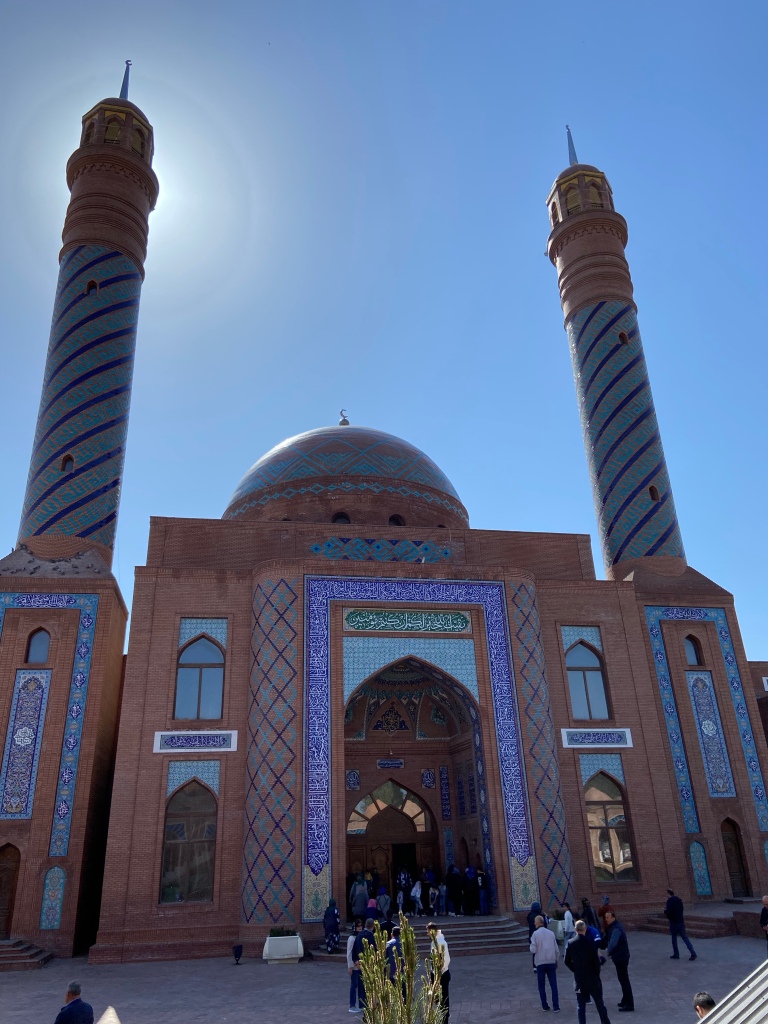
The best and most up to date information about these trains and buying tickets can be found on the Wanderlush website here.

Marshrutkas
Marshrutkas (minibuses) are very common throughout the Caucasus region, they will take you to most major towns and cities for just a few euros, depending on the distance. However, the condition of the buses and the safety of the driving can vary significantly. Whilst in Tbilisi you will see many modern marshrutkas, in rural areas they can be a bit ropey. We didn’t find marshrutkas to be essential and generally found it better to use the train, hitchhike and rent a car.



Mud volcanos and petroglyphs at Qobustan, Azerbaijan
Hitchhiking
Hitchhiking is much more common in the Caucasus than in other parts of the world. Particularly in Georgia, where anytime we were walking along the road in rural areas, several people would stop to offer us a lift, even though we didn’t have our thumbs out! We ended up hitching several times and had great experiences, it is a surprisingly practical way to get around.



Clockwise from left: Geghard Monastery, Garni temple and Garni basalt columns – Armenia
Border crossings in The Caucasus
Visas
Depending on your nationality, the ease of getting a visa can vary significantly. We are allowed to visit: Georgia for up to 12 months visa free, Armenia for up to 6 months visa free and Azerbaijan with a pre-approved e-visa, which allows stays of up to 30 days.
Top Tip: Always get entry and exit stamps in your passport to prevent any issues.



Vardzia ancient city & thermal pool and churchkhela In Kutaisi – Georgia
Armenia and Azerbaijan border issues
For over 35 years there has been high tension and several outbreaks of war and fighting between Armenia and Azerbaijan. To say the countries don’t get along would be an understatement. The conflict is centred around the breakaway Nagorno-Karabakh region, with both sides fighting for control of the area and the rights of their citizens to live there. It is worth educating yourself on the history of this issue, but do not take sides as a tourist. It is a complex conflict, both sides have suffered tragic losses over the years and it is a very sore topic. The real tragedy is that everyday people in both countries are genuinely wonderful, kind and some of the warmest you’ll ever meet. We can only hope for stability and one day reconciliation.
At the time of writing (March 2024) Azerbaijan have regained control of Karabakh and almost all Armenians have now left the region. The situation when we visited was quite different and whilst the current outcome will not be satisfactory to both sides, hopefully it will mark an end to the fighting. After all the years of hostility, we hope the two sides can move forwards without the loss of any more lives.
There are no specific rules which ban entry for tourists who have visited either Armenia or Azerbaijan from also visiting the other. Although, you will hear this from a few travellers and various places online. It doesn’t particularly matter which of the countries you visit first, so just do whatever is the best option based on other factors like the weather, or transport. When you do travel between the two you must go via a different country, of which Georgia is by far the easiest to organise. The border between Armenia and Azerbaijan is permanently closed, as is the border between Armenia and Turkey.
As we started our trip in Turkey, we visited Georgia first. We took the overnight train to Yerevan, the capital of Armenia. We subsequently travelled back to Georgia on the overnight train before flying to Baku, the capital of Azerbaijan. Since the pandemic in 2020, Azerbaijan’s land border with Georgia has been closed, although flights run very regularly without the need for a PCR test. A provisional date of April 2nd 2024 has been set for the border reopening, but this has happened before and subsequently been postponed.
We kept a list of addresses of where we stayed in Armenia and the dates. We also had the address of the first place we planned to stay at in Azerbaijan. You will also need this when you fill out your eVisa. At Baku airport we were asked to provide this information in addition to our visa (printed off). We also had to declare we had not visited the Nagorno-Karabakh region. They asked where we had visited in Armenia, the places we had stayed and when, and the purpose of our trip. We were asked the same questions about what we would be doing once we entered Azerbaijan. We didn’t have our outward bound travel booked which they didn’t particularly like, they took photocopies of our passports and we were allowed entry. Whilst we got a slight grilling, it wasn’t that bad and they were mostly just doing their job. Needless to say learning salam and sağ ol went a long way to making a good first impression at the border.
Just in case it needs reiterating, avoid talking about Karabakh and politics. There’s loads of other things you can talk about, steer clear of those subjects and you won’t piss anyone off.
Accommodation options in the Caucasus
Accommodation in the Caucasus, outside of the large cities and towns, can be tricky to find. For climbers, this often means you won’t be staying particularly close to the crags, one of the many reasons we recommend having a car. You will usually be able to find somewhere within 30 minutes drive and certainly being able to drive or cycle yourself will massively increase your options. Georgia is the most touristic of the 3 countries and as such has more accommodation options and tourist infrastructure. Even still finding places near the crags isn’t always easy, the notable exception being Sveri adventure camp.

The accommodation throughout the Caucasus is generally really nice and we particularly enjoyed staying in small family run homestays. Having delicious home cooked meals is always unbeatable! You can usually find these places through google maps pins, Booking.com or occasionally AirBnB. We doorstepped a few places we found on google maps and never had any problems getting a room, it was all part of the fun not knowing what it was going to be like! Price wise, accommodation is perhaps more expensive than other things within all 3 countries, e.g in relation to a restaurant meal. However, we always felt the cost was fair and the places we stayed were nearly always good value.

Currency, exchanges and ATMs
In all the main cities and towns you will be able to find a currency exchange. They will generally only accept foreign currency (some from the neighbouring countries and euro and USD) in return for the local currency. We did try to exchange some local currency for euros or dollars, but they were generally reluctant to do it and definitely wouldn’t for the currency of a neighbouring country. We also found most ATMs didn’t charge you a fee for taking out cash. Make sure you take out enough cash as most places will not take card, even large hotels and restaurants still operate cash only. Carrying some Euros or Dollars is also useful as sometimes the ATM wouldn’t accept our card.

Top Tip: Download a currency converter app onto your phone so you can find out how much you are paying. We used this one, which keeps up to date exchanges and allows you to convert offline without an internet connection.

SIM cards and internet access
Our foreign SIMs still worked in the Caucasus, however, the roaming fees are so extortionate it was hard to imagine that anyone would actually use it. We found that a lot of cafes and restaurants didn’t have wifi, so if you want to be connected to the internet whilst you are out and about it is worth buying a tourist SIM card (a pre paid SIM card). These are a lot easier to obtain than in Western Europe and usually all you need is a passport, you can pay in cash at most phone shops. The three countries have different network providers so it is necessary to buy a different SIM for each one. The prices are good for what you get and it is easily justified if it will be at all useful for your trip.
Top Tip: Use Google Maps offline map feature by pre-downloading your maps when you have a wifi connection

Food and Drink
The Caucasus region has phenomenal food culture, the range of delicous meals on offer is a genuine treat and is a really enjoyable part of travelling there. Not only is the quality of the food very high, but it also provides an insight into the history of the area and its influences over time. A great example of this is wine, which has its origins in the Caucasus. Evidence of winemaking in Georgia goes back some 8,000 years and it is still made using traditional methods to this day. This same depth of tradition can be found across the Caucasus and food is one of the best ways to experience it.
As there are so many great dishes to mention, we will give 3 of our favourites from each of the 3 countries.

Armenia
Manti are delicious small dumplings, usually baked in Armenian cuisine, giving them a different texture to most dumplings of the region. The dumplings are usually made with beef or lamb, which is minced and combined with delicious herbs and spices. The dough is wrapped around the meat to form little open top ‘boats’, they are very pretty to look at and even tastier to eat! They are usually eaten with yoghurt on top and the dish can also include a delicious tomato broth.
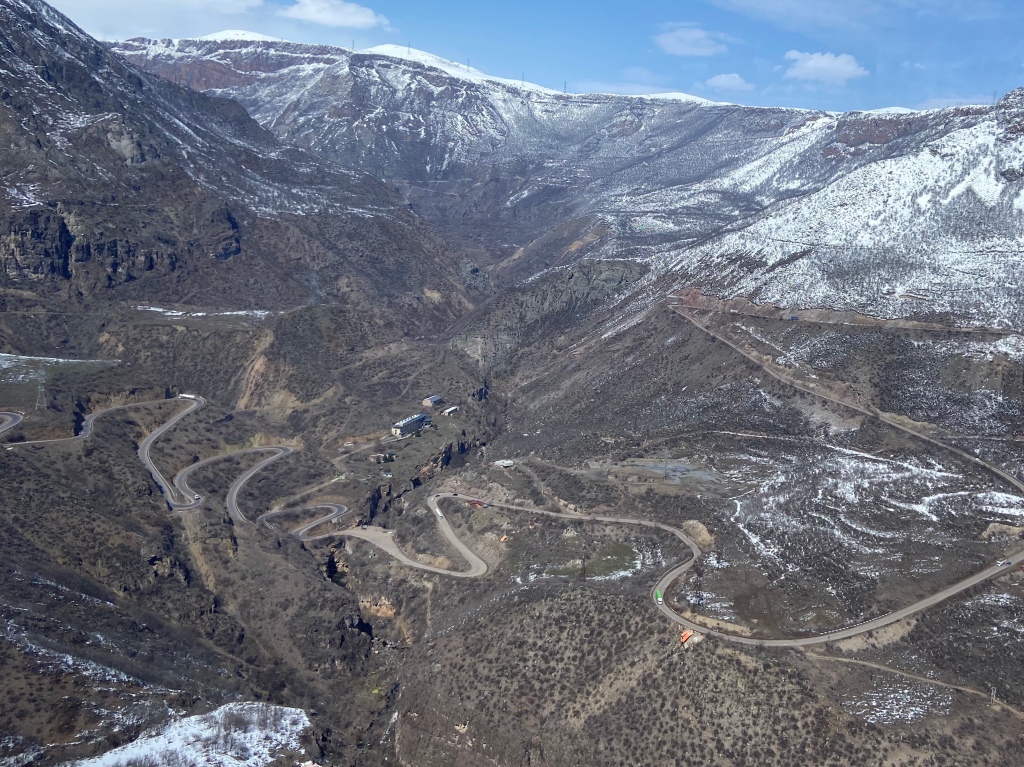
A classic Armenian staple is Harissa, Which is made from wheat and chicken. Harissa is essentially chicken porridge and although that may sound unusual it works very well and is a really delicious and hearty meal. It is traditionally served with Lavash, which are large unleavened flatbreads traditional to Armenia, as well as various pickled vegetables. The lavash have a wonderful texture and go brilliantly alongside the harissa.
Dolma are also very popular in Armenia, usually made by stuffing vine or cabbage leaves with meat and rice. However, Armenians are known to stuff pretty much any type of vegetable with Dolma mix and so they can vary a lot from place to place. Many countries in the region eat Dolma, but they are somewhat of a speciality in Armenia and are one of the tastiest meals you can have in the country.

Azerbaijan
One of Azerbaijan’s national dishes and one of the most unique things to eat in the country is Pitisi. The dish has its origins in Sheki, a town famous for its Silk Road trade and beautiful Khans Palaces. Pitisi is effectively a stew, cooked in a cylindrical clay pot, typically containing meat, chickpeas and lots of delicious herbs and spices. What makes Pitisi so unique is the way it is eaten. First bread is torn and placed into a bowl, over which the liquid of the stew is poured. Once the bread has absorbed the broth, this is eaten as the first serving. You then use a wooden pestle to smash all of the solid ingredients into a paste inside the clay pot. Once the correct texture is achieved, you pour the mix into the bowl and enjoy your second serving. Without a doubt, it is one of the most interesting and delicious things we have ever eaten.

Sheki is also famous for the eponymous Sheki Halva. Despite being named halva, Sheki halva is in essence more like a baklava than what most people know as halva. Sheki Halva is made using rice flour, which gives it its distinctive appearance. Hazelnuts are used for the centre, along with sugar and delicious aromatic spices like cardamom, saffron and coriander seeds. it’s wonderful that so much of Sheki’s cultural identity lives on today through its food and Sheki halva is one of the best ways to taste the vibrant history of the place.
Qutab are one of the most Satisfying and satiating things to eat in Azerbaijan. Qutab are stuffed flat breads that can be filled with a variety of different ingredients. The best and most unique filling is camel meat, which has a wonderful rich taste that complements the flatbread perfectly. Qutab vary in size and filling throughout the country, so you can try new varieties as you travel. Camel Qutab are traditionally from Corat, a town in Sumqayit, this is the place to go for the best camel Qutab.

Georgia
Khinkali are a truly fantastic meal, one of those that far exceeds expectations and that you simply can’t get enough of! Khinkali are large dumplings which have been crimped together to form a handle you hold whilst eating them. The dumplings are traditionally filled with meat and spices, the flavour is awesome. Due to the way they are prepared and cooked, Khinkali fill with meat juices and broth, on your first bite you suck out all this delicious liquid before devouring the rest.
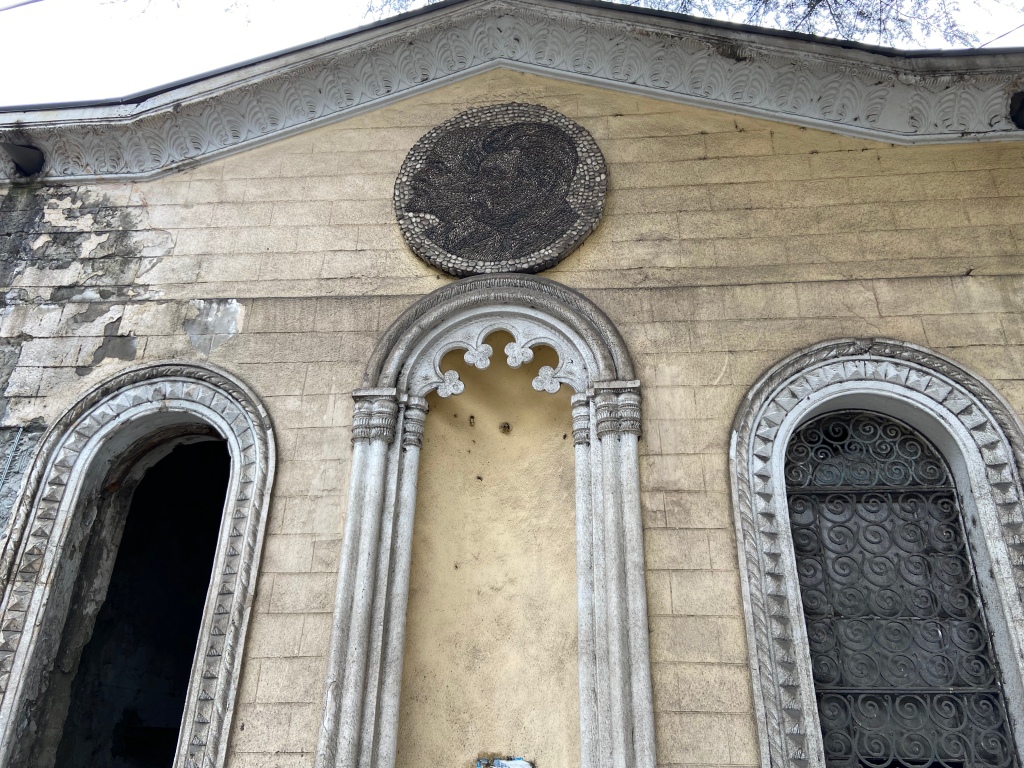
Probably Georgias most famous dish, Khachapuri is deserving of its popularity. It is made in many different ways depending on which region of Georgia you are in – They’re all delicious! Khachapuri is generally based around bread dough and cheese, with classics like Adjarian Khachapuri coming open topped with an egg and a knob of butter on the top. Imereti Khachapuri is another fantastic example, with all the delicious melted cheese inside the bread, an absolutely glorious meal.
Lobio is one of Georgias more simple sounding dishes, but don’t let that fool you, the flavours are excellent. Lobio is a bean stew which comes in a ceramic pot. The combinations of herbs and spices used to season the beans give the dish a wonderful warmth and depth of flavour. There are several variations of lobio, such as lobio with walnuts. Traditionally it is served alongside Mchadi (cornbread). Worth a special mention is Lobiani, which is a bread stuffed with lobio – think Imereti khachapuri style but with beans!

Water safety in the Caucasus
Water quality in the Caucasus is generally very good, owing to the mountainous areas which receive relatively high amounts of rain and snowfall. Particularly in Georgia and Armenia, the tap water is considered safe to drink. Azerbaijan can be slightly more varied depending on which part of the country you are in, it is more common to see locals drink bottled water here. We drank a mix of tap water, bottled water and water from taps flowing straight from the mountains – all without any issue. If you want to be able to drink all the tap water stress free, then using a purifier that kills bacteria, like a Steripen, will see you right.

Summary
The Caucasus is truly a wonderful region, with an incredible amount of beautiful and interesting places for an area of its size. The climbing is very diverse and can be a great test of your mettle, it will definitely teach you a thing or two. The crags are often in stunning locations and you will most likely be the only people there. The locals are incredibly friendly and in most of the rural climbing areas you will get to meet lovely people who welcome you with open arms.
Climbing aside, the Caucasus is home to amazingly rich cultures and history, with historical sites, local traditions and food being unmissable parts of a visit to the region. We have some of our fondest ever memories from our 10 weeks in the Caucasus, we would do it all again in a heartbeat and wouldn’t hesitate to return again one day soon.
You can read our articles all about rock climbing in the Caucasus here.
Relevant links and resources
Great article promoting travel to the Caucasus, showcasing what each country has to offer
https://www.travelweekly.com/Europe-Travel/The-three-republics-of-the-Caucasus
Food and drink recommendations
Armenian dishes www.absolutearmenia.com/dishes-armenia-food
Azerbaijan dishes https://nomadparadise.com/azerbaijani-food/embed/#?secret=NE7JJDpykr#?secret=NPIGZH1JGf
Georgian dishes https://www.willflyforfood.net/food-in-georgia/
More history of the Caucasus region
https://en.wikipedia.org/wiki/History_of_the_Caucasus
https://www.cfr.org/global-conflict-tracker/conflict/nagorno-karabakh-conflict
I’d love to try the Gata!
LikeLiked by 1 person
Sounds like an amazing part of the world, both in the tough climbing and in the mountain views. Georgia has been on our list, but mostly for the food!! Maggie
LikeLiked by 1 person
Thanks for the comment! It really is a beautiful area and the food in Georgia and elsewhere definitely lives up to the hype and will not disappoint!
LikeLiked by 1 person